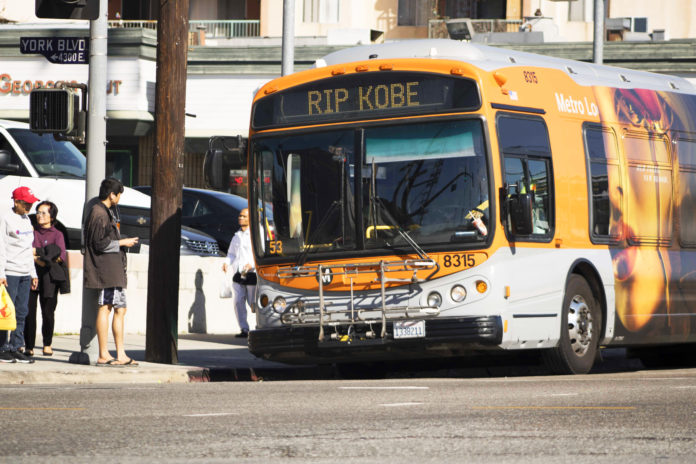
The North Hollywood to Pasadena Transit Corridor is a $267 million transportation project that plans to run Bus Rapid Transit (BRT) systems along 18 miles between the San Fernando and San Gabriel Valleys. According to the project’s Alternative Analysis Report, Metro has offered public scoping opportunities via workshops and online comment forms since Spring 2019. Community members were able to weigh in on their preferred routes for the BRT line through public scoping. A new round of community workshops that were not part of the public scoping process took place in November 2019, according to Metro Communications Manager Brian Haas.
Haas said eight workshops were conducted in six locations from early to mid-November. Compared to public scoping workshops, which tend to contain presentations by Metro staff, the new workshops were far more participatory in nature, according to Haas.
“We had activity polling questions, asking them, ‘Where are your priorities when it comes to landscaping, traffic?’ And then we had an activity where we had people using Post-its to create a list of their priorities,” Haas said. “Finally, we had a ‘build your own street’ activity where we had the cross section of a street and allowed people to carve it up.”
Richard Loew, vice president of the Eagle Rock Neighborhood Council (ERNC), said he went to a workshop in Yosemite Recreation Center Nov. 16. During the workshop, Metro provided participants with clickers to select their priorities, according to Loew. Loew started following the project in early 2019. He said people engaged in a more civilized manner in the recent workshops.

“I think the one [workshop] at the Eagle Rock Plaza was the one where there was a lot of vocal people saying things,” Loew said. “And in this workshop, there were a few people that were voicing their concerns suggesting this process was not open, because it wasn’t considering the 134 [freeway] … but everybody had their opportunity to voice their concerns.”
Haas said Metro understands some community members were upset that there were no street-building exercises for the 134 freeway. This is because freeways like the 134 cannot be modified to include mediums for the BRT lines, according to Haas.
Marcel Wittfeld, boulevards director at ERNC, said he started following the project as early as October 2018. He also went to the Nov. 16 workshop. According to Wittfeld, although the workshop was interactive, its emphasis on developing Colorado Boulevard for the BRT did not please participants.
“Most people didn’t want it on Colorado Boulevard. It’s like saying to a bunch of people who don’t like spaghetti, ‘How do you make the best tomato sauce?'” Wittfeld said. “Sure, there is the potential to beautify Colorado Boulevard along with creating a bus lane. But a lot of people were skeptical that a bus lane like that is needed at all.”
Wittfeld said with the rising popularity of clean vehicles and the younger generation using more ride-sharing services, public transportation is losing its appeal. Wittfeld and his wife own the indoor playground Peekaboo Playland located on Colorado. Wittfeld said he believes the motivation behind developing the BRT line is to enable high-density housing in the area, which will drive up rents and force smaller businesses like his to leave.
“Instead of Peekaboo, there will be an Urban Outfitters, and instead of a little restaurant, there might be a Cheesecake Factory,” Wittfeld said.
In addition to business owners, the ERNC is also concerned over whether its voice will be heard by Metro. Loew said neighborhood councils typically engage with city officials, but Metro is an LA County agency.
“Whether the neighborhood council has a voice in actually speaking to Metro is an open question, and it’s a concerning question for those of us on the board,” Loew said.
According to Haas, the territory discrepancy does not hamper communication, and Metro works closely with neighborhood councils. After the November workshops ended, Metro started drafting the Environmental Impact Report (EIR) for the project, which analyzes potential environmental impacts the BRT line might have, according to Haas. Some of the issues under examination include noise, greenhouse gas emissions and aesthetic changes.
A Draft EIR (DEIR) is expected to be completed by Spring 2020, followed by another public commenting period, according to Haas. Wittfeld said he hardly believes any community action, except for litigation, will change the course of this project.
“Maybe I’m wrong. Let’s see what happens,” Wittfeld said.
![]()


































